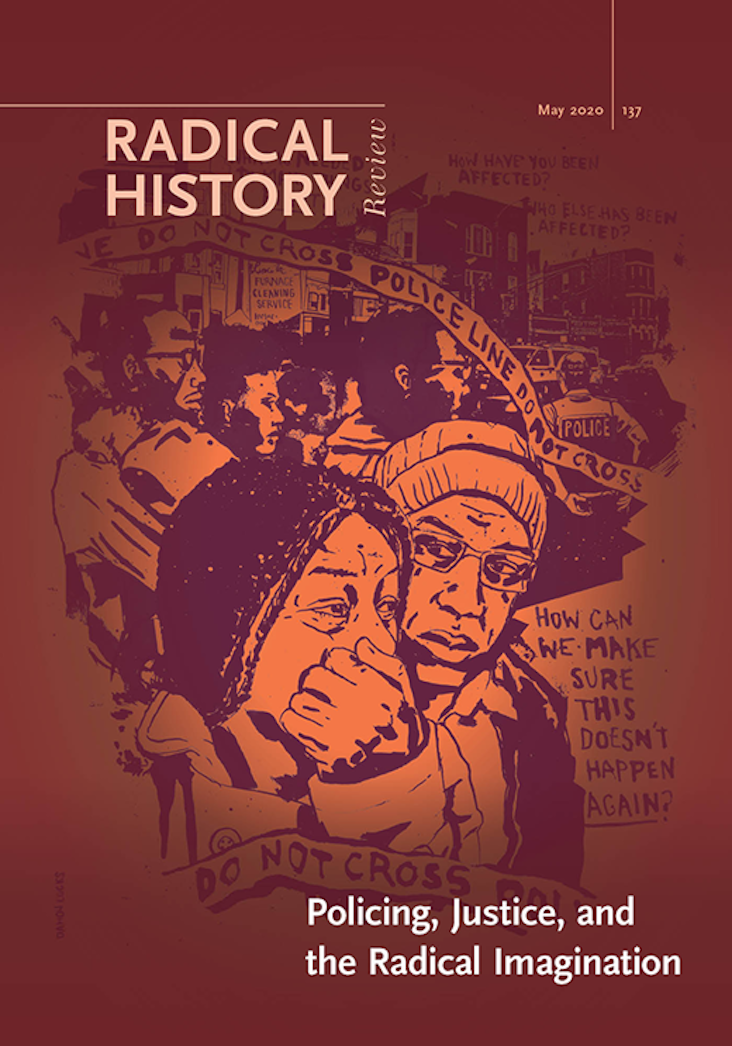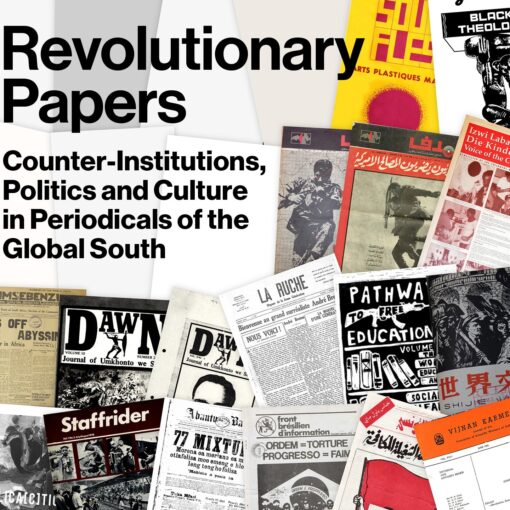A Call for Proposals from the Radical History Review
Issue number 155 (May 2026)
Abstract Deadline: July 15, 2024
Co-Edited by Andor Skotnes and Paul Buhle
This RHR issue will explore the recent history of comics in North America and globally—defined broadly as works that combine sequences of visual images, frequently with text, to convey narratives. Comics in this sense have existed for well over a century as independent publications as well as appearing in circulars, newspapers, magazines, pamphlets and other print (and more recently digital) media. During the 1930s, popular audiences for comics grew rapidly, especially among youth, and then grew explosively during the 1940s into the 1950s. The range of subject matter for comics expanded from cartoon characters (often anthropomorphic animals) to human caricatures (sometimes humorous), to “realistic” genres like romance and crime, as well as historically-based situations, and—especially with WWII and is aftermath—war.
Having seemingly secured a firm place in popular culture, something of a shift occurred in comics in the late 1950s, when they came under attack in a number of countries by guardians of morality as a result of the Red Scare of the period and of hysteria over juvenile delinquency. But by the 1960s, shaped by rising social struggle (especially the peace and anti-colonial movements, and in North America, the Black freedom movement)— along with proliferating cultural insurgencies (jazz, rock and roll, the Beats, youth culture, etc.)—a subversive wing of the comics movement emerged that became known as underground or radical comics, and, more recently, alt comics.
This oppositional wing of the comics movement continues o develop to this day in many modalities and forms, expressed in comics that are for social criticism and graphic journalism; that subvert hegemonic cultural and political norms; that ridicule established hierarchy and power; that pay increasing attention to historical subjects, themes, biographies, and memoirs; that sometimes protest but more often satirize. Simultaneously a new kind of comics—graphic novels and books—rapidly expanded its presence and popularity. This new wing which draws on the political and cultural movements of the recent period in complicated ways, and in turn contributes to them (feminism is a key example), will be the subject of this issue of Radical History Review.
This RHR issue will offer critical perspectives on the field of subversive comics—on its strengths as well as its weaknesses. It will aim to appreciate, understand, but not romanticize. We should add that over the years comics have been features of RHR, and we see this issue in that tradition as further advancing the study of this important aspect of cultural history. This RHR issue will focus on comics globally, and will encourage contributions on and about comics abroad, although we will to some extent need to emphasize North America. And we will encourage contributions from historians and other commentators and from comic artists— both written and drawn, as well as “hybrids” that merge prose and images.
Topics of submissions may involve but are not limited to:
- The relationship of comics and comic artists to important democratic social movements in the U.S and beyond: Black, Latinx, and Asian American liberation; feminism, and LGBTQ rights.
- The involvement of comics as aspects of various countercultures.
- Comics by artists of color, and about communities of color.
- Comics by artists in countries outside the United States about Africa. Asia, Europe, or the Americas.
- The aesthetics of various types of comics.
- Comic art in relationship to other artistic and cultural practices.
Radical History Review publishes material in a wide variety of forms. The editors will consider research articles and extended essays; interviews with comic artists or others in the comics field;“conversations” between scholars and/or activists; brief interventions and commentaries; essays on museum and other public forums;film and book review essays”; annotated course syllabi; and, of course, comics, either as short strips or substantial pieces.Preliminary inquiries may be sent to issue editors: Andor Skotnes (skotna@sage.edu) and Paul Buhle (Paul_Buhle@brown.edu).
Procedure for submission of articles:
By July 15, 2024, please submit a 1-2 page abstract summarizing the article you wish to submit to our online journal management system, ScholarOne. To begin with ScholarOne, sign in or create an account at https://mc04.manuscriptcentral.com/dup-rhr. After signing in, select “Author” from the menu up top, and click “Begin Submission” or “Start New Submission.” Upload a Word or PDF document, including any images within the document. After uploading your file, select “Proposal” as the submission type and follow the on-screen instructions. Please write to contactrhr@gmail.com if you encounter any technical difficulties or have any other questions about the process.
By August 15, 2024, authors will be notified whether they should submit a full version of their article for peer review. The due date for completed articles is expected to be in November 2024. Those articles selected for publication after the peer review process will be included in issue 155of the Radical History Review, scheduled to appear in May 2026.
Abstract Deadline: July 15, 2024
Contact: contactrhr@gmail.com
Credit for featured image: courtesy of Sabrina Jones, www.sabrinaland.com + Instagram @sabjonze





